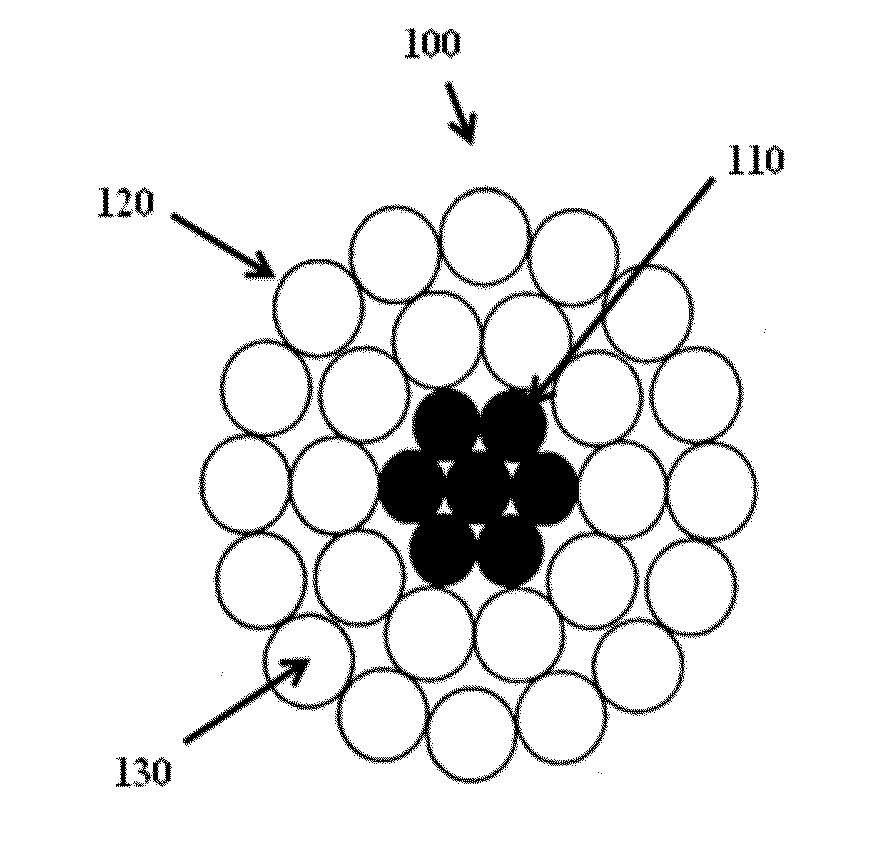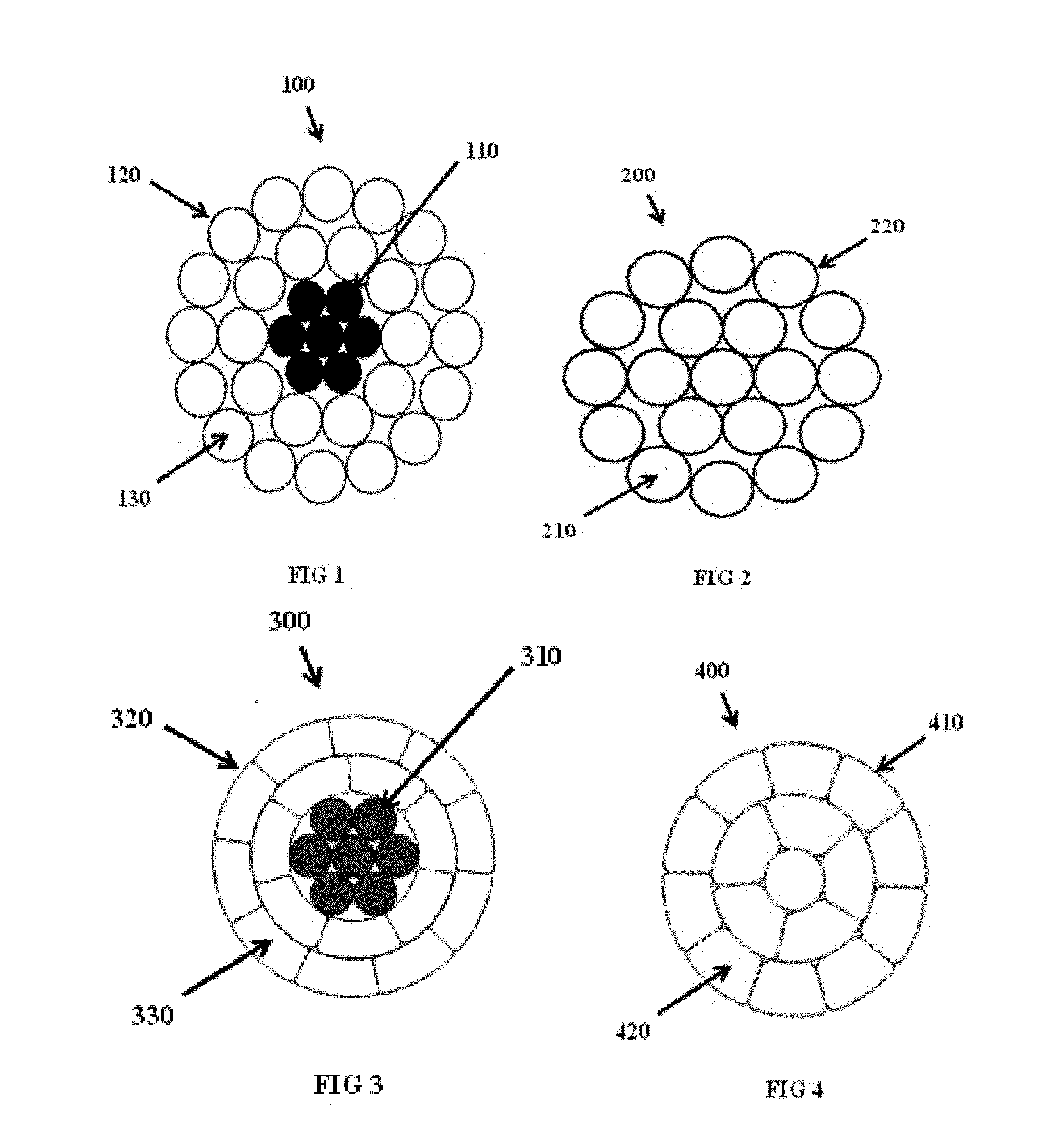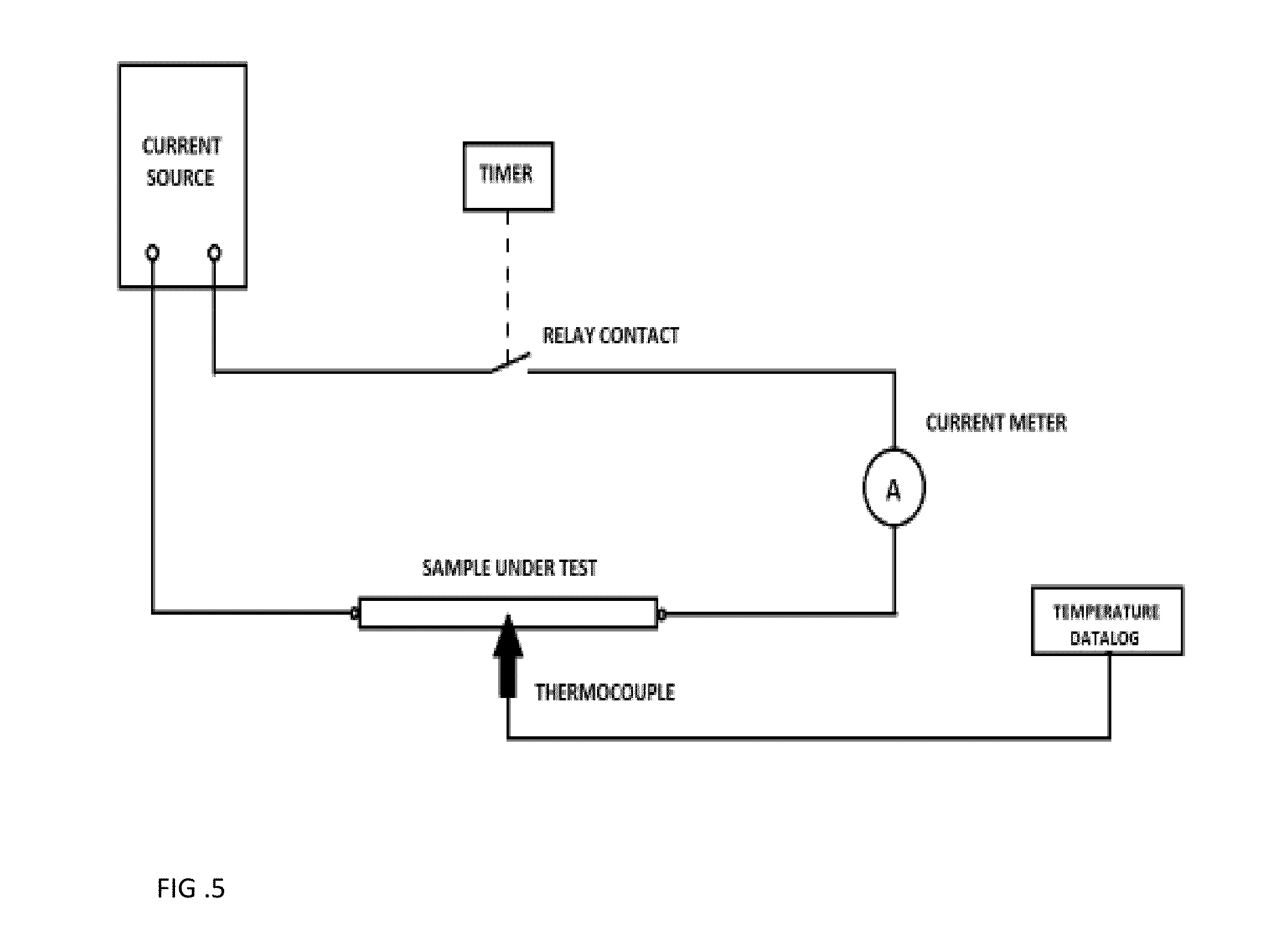Surface modified overhead conductor
a technology of overhead conductors and modified surfaces, which is applied in the direction of non-insulated conductors, power cables, cables, etc., can solve the problems of limited line capacity, more electrical losses in the conductor, damage to the conductor or the accessories of the line, etc., and achieve the effect of reducing the operating temperature of the conductor
- Summary
- Abstract
- Description
- Claims
- Application Information
AI Technical Summary
Benefits of technology
Problems solved by technology
Method used
Image
Examples
example 1
[0062]Computer simulation studies was performed using different E / A (Emissivity to Absorptivity ratio) values, to measure the reduction in operating temperature of the conductor for the same peak current. The E / A ratios were considered as the surface property of the conductor which is modified by coating. Table 1 tabulates the simulation results for various designs of overhead conductor:
TABLE 1Simulation ResultsSymbolUnitsCase 1Case 2Case 3Case 4Case 5Case 6Case 7Simulation 1: Rail ACSRE / A RatioE / A.5 / .5.3 / .3.9 / .9.7 / .5.8 / .4.9 / .3.9 / .2Number conductors per bundle1111111Peak Current (per conductor)Iamps970970970970970970970Sub-conductor temperatureTc° C.74757370676463Sub-conductor Resistance at TcRohms / mile0.140.140.140.140.140.130.12Power LossPLkW / mile115.37115.60115.03113.92112.68111.52111.03Simulation 2: Curlew ACSRE / A RatioE / A.5 / .5.3 / .3.9 / .9.7 / .5.8 / .4.9 / .3.9 / .2Number conductors per bundle1111111Peak Current (per conductor)Iamps1040104010401040104010401040Sub-conductor temperatureTc°...
example 2
[0063]A coating was prepared by mixing Sodium silicate (20 weight %), Silicon dioxide (37 weight %) with Boron Carbide as a heat radiating agent (3 weight %) and Water (40 weight %). The coating composition is applied to a metal substrate having an emissivity of higher than 0.85. A current is applied through the metal substrate with a 1 mil coating thickness and an uncoated metal substrate to measure the performance improvement of the coating. The test apparatus is shown in FIG. 5 and mainly consisted of a 60 Hz ac current source, a true RMS clamp-on current meter, a temperature datalog device and a timer. Testing was conducted within a 68″ wide×33″ deep windowed safety enclosure to control air movement around the sample. An exhaust hood was located 64″ above the test apparatus for ventilation.
[0064]The sample to be tested was connected in series with an ac current source through a relay contact controlled by a timer. The timer was used to activate the current source and controlled ...
example 3
[0070]Wind effects on temperature rise of the two #4 AWG solid aluminum coated conductors were evaluated at a current of 180 amps. A fan with three speeds was used to simulate the wind and the wind blew directly to the conductor being tested from 2 feet away. The test method circuit diagram is showed in FIG. 7. Both coated and uncoated conductors were tested under 180 amps, solar light, and wind; and the test results are shown in Table 2. The coated conductor was 35.6%, 34.7% and 26.1% cooler than the uncoated when subjected to no wind, low wind, and high wind, respectively. The speed of the wind had a little impact on the coated conductor but a 13% impact on the uncoated.
TABLE 2Wind effect on coated and uncoated conductor's temperature at 180 amps.Temperature Rise (° C. )180 ampsUncoatedCoatedDifferenceDifference (%)No Wind1741126235.6Low Wind101663534.7High Wind88652326.1
[0071]Wind effects on temperature rise of the two #4 AWG solid aluminum conductors were evaluated at 130 amps c...
PUM
| Property | Measurement | Unit |
|---|---|---|
| operating temperature | aaaaa | aaaaa |
| operating temperature | aaaaa | aaaaa |
| heat emissivity coefficient | aaaaa | aaaaa |
Abstract
Description
Claims
Application Information
 Login to View More
Login to View More - R&D
- Intellectual Property
- Life Sciences
- Materials
- Tech Scout
- Unparalleled Data Quality
- Higher Quality Content
- 60% Fewer Hallucinations
Browse by: Latest US Patents, China's latest patents, Technical Efficacy Thesaurus, Application Domain, Technology Topic, Popular Technical Reports.
© 2025 PatSnap. All rights reserved.Legal|Privacy policy|Modern Slavery Act Transparency Statement|Sitemap|About US| Contact US: help@patsnap.com



